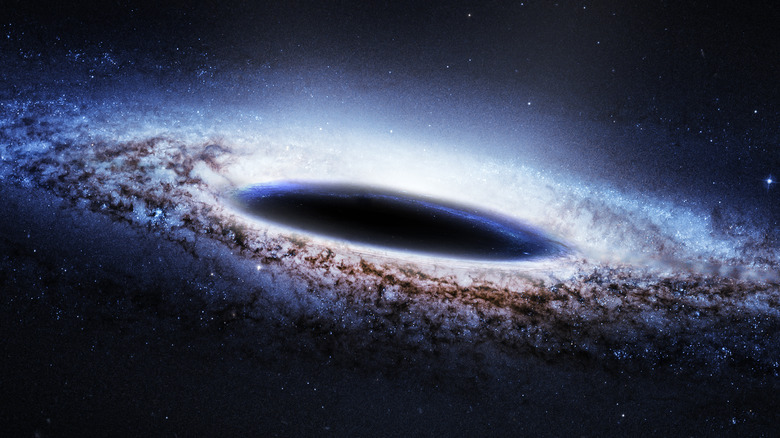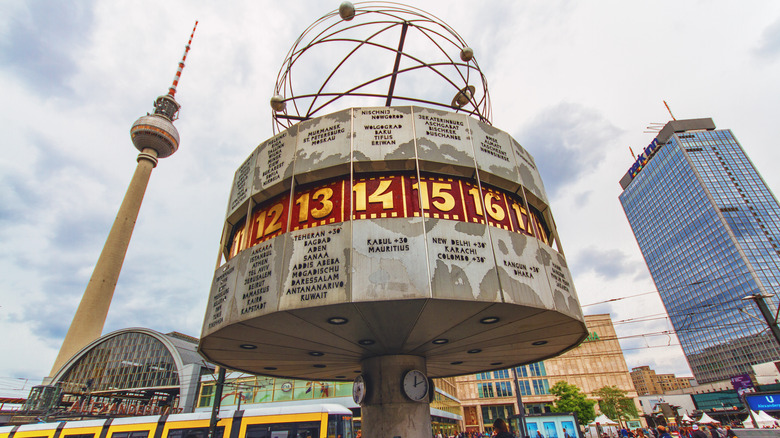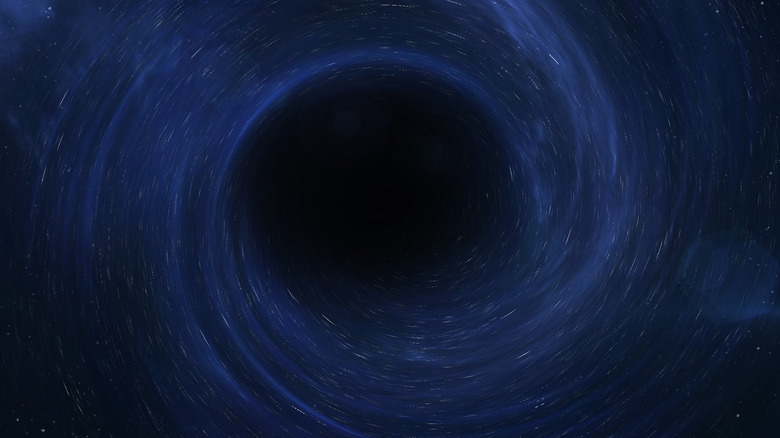Why Black Holes Slow Down Time As You Get Closer To One
Black holes are strange and fascinating celestial phenomena that challenge the laws of physics. From swallowing up entire stars to warping the very fabric of space-time and generating massive gravity forces, black holes seem to do unnatural things. In a video for World Science Festival, a Britannica publishing partner, Brian Greene reveals that the story of black holes began with the German meteorologist Karl Schwarzschild, who was also a mathematician and an astronomer.
During World War I, he was stationed on the Russian front. Greene explains that Schwarzschild was there to calculate bomb trajectory. "And somehow, in the trenches, he gets hold of Einstein's paper of the general theory of relativity, and [does] some calculations on it," Green adds. Through his calculations, Schwarzschild realized that when significant spherical masses collapse and are crushed into very small sizes, the forces of gravity are so strong that nothing in the influence area of a black hole can escape its pull. Just like Einstein's theory predicted: black holes warp, bend, and distort space-time.
What is time dilation?
To understand why time slows down as an object gets closer to a black hole, it is necessary to understand what time dilation is. Live Science explains that Einstein — obsessed with space and time — was the first to realize that time was relative. After more than a decade of work, Einstein published his general theory of relativity in 1915, shocking the Newtonian establishment and revolutionizing science. Einstein argued that while the laws of physics are constant throughout the universe (via The Conversation), speed or motion, space, and time are not constant but relative. Relative to what? To the point of observation or observer.
Einstein often spoke about trains and how people on and off moving trains would perceive time and speed differently. He cited, for example, that a speeding train would move much faster for a person standing on the side of the track than for a person chasing the train on another train running parallel to it. This has fueled a range of wild experiments with clocks and atomic clocks, and the answers proved Einstein was right: time is not constant and it can dilate.
But to be scientifically accurate, time does not change because of where an observer may be; it changes due to changes in gravity. Scientists have proven these changes in time by measuring atomic clocks on top of buildings and on ground levels, or on orbiting satellites and on Earth. So, if gravity can change time, what would happen to time in the presence of the massive gravitational forces of a black hole?
What is gravitational time dilation?
When time finds a black hole, the most dramatic example of time dilation takes place because black holes are the densest objects in the universe and have the greatest gravitational pull. NASA JPL studies black holes to understand how space and time interact. The team explains that as an object approaches a black hole, the flow of time slows down from the perspective of an observer who is experiencing the flow of time outside of the black hole's influence. For example, if a star approached a black hole and we could see it from Earth with a telescope, we would see it slowing down more and more until it actually seemed frozen in time, and we would never see it fall into the black hole. However, from the star's perspective, time flows normally.
Einstein's theory of general relativity says that time will slow down near any massive object due to its gravitational pull. This is called gravitational time dilation, which increases exponentially near black holes. Black holes used to be dying stars, sometimes hundreds or thousands of times the mass of our sun, that collapsed and compressed into a very small size. "It takes an incredibly massive object, such as a black hole, to make an appreciable difference in the flow of time. There's still much to learn about what happens to time and space inside a black hole," says Ota Lutz writing for NASA JPL.


